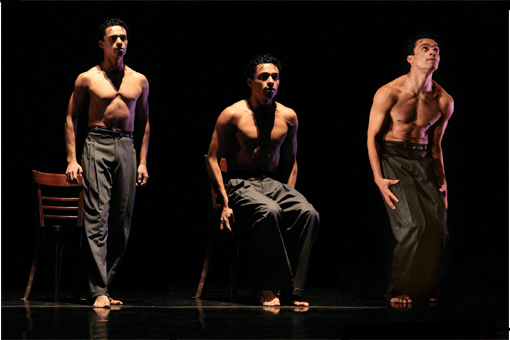Dancing, as anyone from Barranquilla, Cali or Bogotá can attest, is in Colombians’ blood. Whether it’s cumbia, salsa or currulao—you name it, they dance it. Yet, lacking career opportunities and financial security, few Colombians ever go on to become professional dancers.
Daniel Fetecua Soto is one of the exceptions. A soloist at the Limón Dance Company and founder and artistic director of Pajarillo Pinta’o, a folklore and modern dance ensemble based in Germany and New York City, Fetecua was raised on salsa and caranga. The 31-year-old native of Bogotá with curly black hair, a strong jaw line and broad smile grew up dancing at family parties and get-togethers but never studied dance formally. After high school, he was admitted to the Universidad Nacional de Colombia (UNAL) in Bogotá to study statistics. Although he loved math, his first semester “was a disaster” because his heart wasn’t in it. Fetecua then considered a military career, completing the obligatory one year of service with high honors before realizing that was not his life’s calling either. He returned to UNAL where, while studying classical trumpet, he was introduced to the formal study of dance through an elective course with well-known modern and folkloric dancer Vladimir Rodríguez. “I remember the first time the teacher made me touch my toes,” he says. “I was in so much pain!”
The pain was worth it. Intrigued by folklore and modern dance, Fetecua joined UNAL’s in-house dance company, Grupo de Danzas Folklóricas, and began to study classical ballet. At that point he was hooked. He continued his formal training at the Academia Superior de Artes de Colombia and then the Folkwang University of the Arts in Germany where he was taught by Libby Nye, a former faculty member at the José Limón School who reconstructed Limón repertory. In 2006, the New York-based Limón Dance Company—a bedrock of American modern dance—offered Fetecua a full scholarship to participate in a summer workshop and subsequently invited him to join the company. In 2003, Fetecua also founded his own dance company, Pajarillo Pinta’o, and both remain his active focus today.
In a testament to the ways in which dance has permeated his life, including his speech, Fetecua gestures frequently, with a rate and energy that matches his level of excitement about a topic. He considers Limón his home base, describing its work pushing boundaries and pioneering a powerfully masculine style as “supremely important.” Pajarillo Pinta’o, on the other hand, is a deeply personal project, although not at odds with his career at Limón. The idea for Pajarillo was born from the stereotypes about drugs and violence in Colombia that Fetecua encountered while in Germany. “I wanted to show the public the other sides of Colombia,” he explains. “And I thought, why not do it through dance?”
In 2003, he and other dancers began showcasing traditional Colombian dance. Observing that audiences were quick to respond to its color, exuberance and coquettish style, Fetecua continued to mount these performances. When he moved to New York, he started to experiment with folkloric styles, combining their easy rhythms and peasant character with the grace and athleticism of classical ballet, as well as the sharp lines and dynamism of modern dance.
He choreographed and danced in Pachamama, a piece fusing the Afro-Colombian currulao style with modern dance and jazz music, as well as Yo no tengo a quien me quiera (I don’t have anyone who loves me), a study of loneliness and displacement inspired by a Lucía Pulido song by the same name.
Today, Fetecua continues to express his Colombian roots through modern dance. He is currently working on a piece about the Bojayá massacre of 2002, in which 119 civilians were killed. Entitled Mar Bellavista, after the town’s urban center, the piece will debut in early spring 2011.





